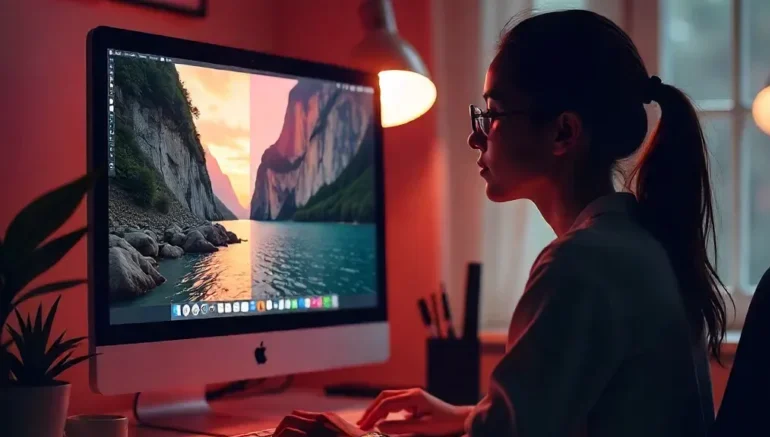
How to Use AI Editing Without Losing the Human Touch
Many photographers and content creators use AI tools to save time and improve their work. But it’s easy to forget that too much automation can make images feel cold or artificial. Learning how to use AI editing the right way can help you improve your photos while keeping their natural feel. By combining AI tools with your personal touch, you can create images that look polished but still human. It’s not about letting machines take over; it’s about working with them to make your vision shine.
Finding the right balance between technology and creativity is key. You want your photos to feel real, with emotions and details that viewers can connect with. Simple adjustments like color correction, background cleanup, or simple retouching can make a big difference without overdoing it. Paying attention to small details, like expressions, lighting, and composition, keeps your work personal and unique. With practice, you’ll see that using AI editing doesn’t have to take away your style, it can help you bring it forward. The goal is to let AI support your creativity, not replace it.
Why You Should Use AI Editing
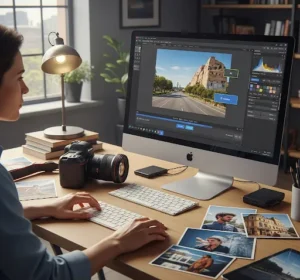 AI editing has become a powerful tool for photographers and content creators who want to save time while improving their work. It helps with tasks that are often repetitive, like adjusting colors, fixing lighting, or cleaning up backgrounds. By using AI editing, you can focus more on the creative parts of your work instead of spending hours on small technical details. It doesn’t replace your skills; instead, it supports you to make your photos look better in less time.
AI editing has become a powerful tool for photographers and content creators who want to save time while improving their work. It helps with tasks that are often repetitive, like adjusting colors, fixing lighting, or cleaning up backgrounds. By using AI editing, you can focus more on the creative parts of your work instead of spending hours on small technical details. It doesn’t replace your skills; instead, it supports you to make your photos look better in less time.
Using AI editing also allows you to maintain consistency across your images, which is especially useful for projects with many photos. However, it’s important to use it carefully to keep the natural, human feel in your work. Here are a few tips to make the most of AI editing:
- Start with small adjustments and avoid over-editing.
- Focus on enhancing important details like faces, expressions, and lighting.
- Use AI tools to save time on repetitive tasks but add your personal touch to keep photos unique.
- Regularly compare before and after results to make your images still feel natural.
Keep the Human Touch in Your Work
 As technology plays a bigger role in our daily work, keeping a human touch is more important than ever. Tools and automation can make tasks faster, but they cannot match the creativity, empathy, and understanding that people bring. If you are creating content, designing products, or serving clients, showing thoughtfulness and personal effort can make a big difference. People notice when your work feels genuine, relatable, and tailored rather than mechanical. Simple actions like responding personally to messages, adding a small personal note, or customizing your work for each client help build trust and connection.
As technology plays a bigger role in our daily work, keeping a human touch is more important than ever. Tools and automation can make tasks faster, but they cannot match the creativity, empathy, and understanding that people bring. If you are creating content, designing products, or serving clients, showing thoughtfulness and personal effort can make a big difference. People notice when your work feels genuine, relatable, and tailored rather than mechanical. Simple actions like responding personally to messages, adding a small personal note, or customizing your work for each client help build trust and connection.
Maintaining the human touch also encourages stronger relationships and a positive reputation. It can make collaboration smoother, as people respond better when they feel seen and understood. To keep this balance, focus on combining efficiency with personalization. Use technology as a tool, not a replacement, and take time to add your unique perspective. A few tips to make your work stays human-centered include:
- Address clients or readers by name whenever possible.
- Share stories or experiences related to your work.
- Ask for feedback and respond thoughtfully.
- Take time to review your work for personal touches.
- Show appreciation for the people you work with.
Best Ways to Use AI Editing
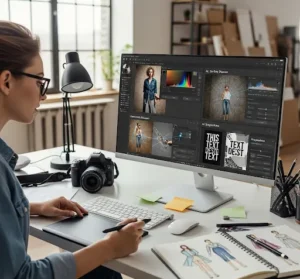 AI editing can be a powerful tool to improve your work, but using it effectively requires balance. It can help correct mistakes, improve quality, and save time on repetitive tasks. For example, AI can quickly fix color issues in photos, remove background distractions, or adjust text formatting in documents. However, relying entirely on AI can make your work feel mechanical or impersonal. Combining AI assistance with your own judgment make sure that the result looks natural and maintains your unique style.
AI editing can be a powerful tool to improve your work, but using it effectively requires balance. It can help correct mistakes, improve quality, and save time on repetitive tasks. For example, AI can quickly fix color issues in photos, remove background distractions, or adjust text formatting in documents. However, relying entirely on AI can make your work feel mechanical or impersonal. Combining AI assistance with your own judgment make sure that the result looks natural and maintains your unique style.
To get the most out of AI editing, consider using it as a helper rather than a replacement. Review its suggestions carefully and adjust match your goals. AI works best when paired with human insight, attention to detail, and creativity. Some tips for using AI editing effectively include:
- Use AI to handle repetitive or time-consuming tasks.
- Double-check edits to make sure they fit your style.
- Add personal touches to keep your work unique.
- Learn the AI tool’s features to use it efficiently.
- Combine AI suggestions with your own knowledge for the best results.
Combine Your Creativity with AI Tools
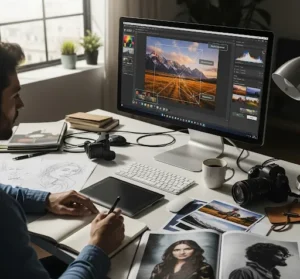 Combining your creativity with AI tools can help you work smarter without losing your personal touch. AI can handle repetitive tasks, suggest improvements, or generate ideas quickly, giving you more time to focus on creative decisions. For example, it can help you experiment with colors, layouts, or text options, while you choose the style that feels right. Using AI as a partner rather than a replacement allows you to bring your unique vision into every project. This approach make your work stays original and engaging while benefiting from the efficiency of technology.
Combining your creativity with AI tools can help you work smarter without losing your personal touch. AI can handle repetitive tasks, suggest improvements, or generate ideas quickly, giving you more time to focus on creative decisions. For example, it can help you experiment with colors, layouts, or text options, while you choose the style that feels right. Using AI as a partner rather than a replacement allows you to bring your unique vision into every project. This approach make your work stays original and engaging while benefiting from the efficiency of technology.
To make the most of combining creativity and AI, it’s important to guide the tools instead of letting them lead entirely. You can review suggestions, tweak outputs, and add personal details to make the results truly yours. A few practical tips include:
- Experiment with AI suggestions but select only what fits your style.
- Use AI to speed up routine tasks, freeing time for creative thinking.
- Add personal touches or small details that reflect your vision.
- Learn the tool’s features to explore creative possibilities.
- Treat AI as a helper, not a replacement for your ideas.
Tips to Improve Your AI Editing Skills
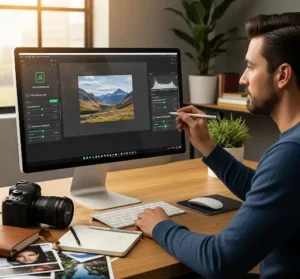 Improving your AI editing skills can make your work faster, more accurate, and more polished. The key is to understand how AI tools work and how to guide them effectively. Start by learning the features and settings of the software you use. This knowledge helps you make better decisions about what to accept, adjust, or reject in AI suggestions. Practicing regularly allows you to see patterns, anticipate AI behavior, and refine your editing process over time.
Improving your AI editing skills can make your work faster, more accurate, and more polished. The key is to understand how AI tools work and how to guide them effectively. Start by learning the features and settings of the software you use. This knowledge helps you make better decisions about what to accept, adjust, or reject in AI suggestions. Practicing regularly allows you to see patterns, anticipate AI behavior, and refine your editing process over time.
By combining technical knowledge with your own judgment, you can create results that are both efficient and high-quality. To get the most out of AI editing, it’s helpful to develop habits that strengthen your skills. Take time to experiment, review outputs carefully, and learn from mistakes. Here are some practical tips:
- Explore all features of your AI tool to understand its capabilities.
- Compare AI edits with your original work to see what changes improve the result.
- Practice consistently to recognize patterns and improve decision-making.
- Keep your personal style in mind when reviewing AI suggestions.
- Seek feedback from others to learn new ways to use AI effectively.
Practice and Improve Your Skills
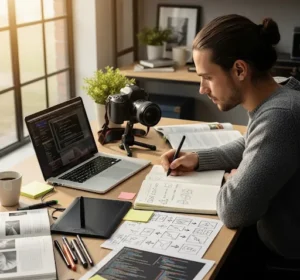 Improving any skill takes regular practice and a focused approach. The more you practice, the more confident and efficient you become. Start by breaking down the skill into smaller parts and working on each part consistently. Don’t rush the process; even short daily sessions can lead to noticeable improvement over time. Mistakes are normal, and they are valuable because they show you where you need to adjust. By reflecting on your progress, you can identify what techniques work best for you and which areas need extra attention.
Improving any skill takes regular practice and a focused approach. The more you practice, the more confident and efficient you become. Start by breaking down the skill into smaller parts and working on each part consistently. Don’t rush the process; even short daily sessions can lead to noticeable improvement over time. Mistakes are normal, and they are valuable because they show you where you need to adjust. By reflecting on your progress, you can identify what techniques work best for you and which areas need extra attention.
To make your practice more effective, create a clear and structured routine. Set specific goals for each session and increase the difficulty gradually as you improve. Learning from others can help you grow faster, if through tutorials, workshops, or feedback from experienced people. Vary your exercises to keep your practice interesting and avoid getting stuck in a routine. Challenge yourself in new ways to build confidence and skill. Consistency and reflection on your progress will make your practice more productive over time.
Tips for better practice:
- Focus on one small part of the skill at a time instead of trying to do everything at once.
- Track your progress to see improvement and stay motivated.
- Take short breaks to avoid burnout and maintain concentration.
- Ask for feedback from someone knowledgeable to identify blind spots.
- Celebrate small achievements to stay encouraged and motivated.
Conclusion
AI editing is a helpful tool, but the real magic happens when you combine it with your own creativity and personal touch. By practicing regularly and learning how to guide AI effectively, you can save time while keeping your work unique and natural. Remember, small adjustments, attention to detail, and thoughtful choices make your images feel alive and human. Don’t be afraid to experiment, make mistakes, and try new approaches; it’s all part of improving your skills. Now we want to hear from you; how do you balance AI tools with your personal style in your work? Share your tips, experiences, or questions in the comments below and join the conversation.
Read Next: 5 Proven Benefits of Human Touch in AI-Edited Photos





